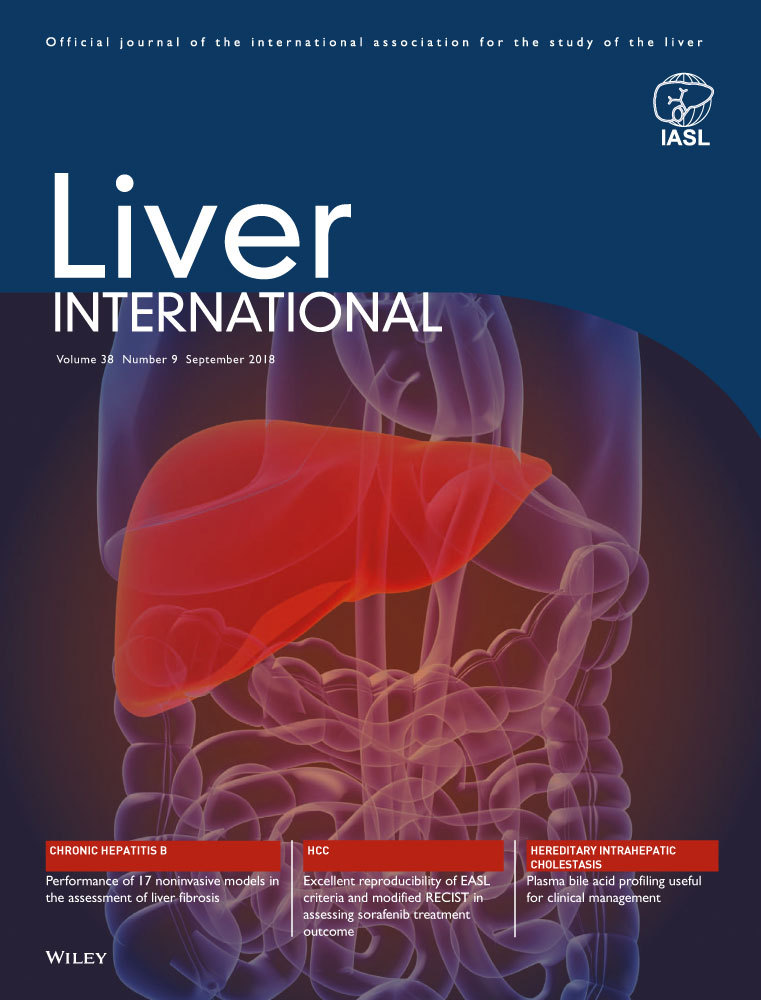Validation and comparison of seventeen noninvasive models for evaluating liver fibrosis in Chinese hepatitis B patients
Funding information
This study was supported by the National Natural Science Foundation of China (No.81471933, No.81672009 and No.81670528) and National Science and Technology Major Project of China (No. 2017ZX10202202 and No. 2017ZX10202203-007).
Abstract
Background & Aims
To avoid liver biopsy, many noninvasive models comprised of serum markers for liver fibrosis assessment have been developed. Given that most of them were developed in hepatitis C cohorts and few of them have been validated in Chinese hepatitis B patients, we aim to conduct this validation and compare their diagnostic accuracies in such a population.
Methods
A total of 937 HBV-infected patients who underwent liver biopsy were included in this single-centre retrospective study. The diagnostic accuracies of the 17 noninvasive models were assessed by areas under the receiver-operating characteristic curves (AUROCs), using histologically evaluated fibrotic stages of the biopsy specimens as standards. To compare efficiencies of the models, a grading system based on AUROC levels was developed.
Results
For discriminating significant fibrosis in all patients, the best three noninvasive models were King's score (AUROC = 0.756), Virahep-C model (AUROC = 0.756) and GPR (AUROC = 0.744); and for diagnosing cirrhosis, Lok index (AUROC = 0.832), FI (AUROC = 0.820) and FIB-4 (AUROC = 0.818) got the first three places. AUROCs in HBeAg-positive group were generally higher than those in HBeAg-negative group. In addition, based on the grading system, Virahep-C and GPR outstood others in evaluating liver fibrosis in all patients.
Conclusions
In Chinese HBV-infected patients, Virahep-C models and GPR had high accuracies in diagnosing liver fibrosis and cirrhosis, while the most discussed models like APRI and FIB-4 did not outstand. Assessment should take into account the HBeAg sero-status, since these noninvasive models were more appropriate for HBeAg-positive patients than HBeAg-negative ones.
CONFLICT OF INTEREST
The authors do not have any disclosures to report.




